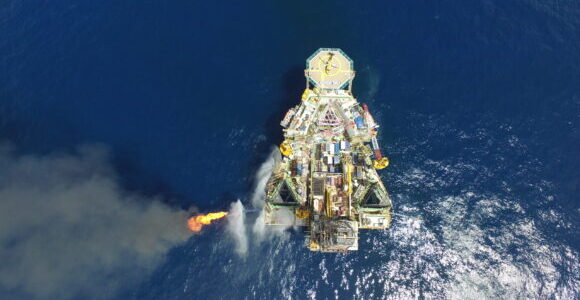Papua New Guinea is on track to become an offshore gas producer before the end of the decade, thanks to Twinza’s Pasca A project. There are also hopes of large offshore oil discoveries, with two separate drilling campaigns being planned in a prospective new offshore basin.

Twinza’s Pasca A project in the Gulf of Papua. Credit: Twinza
Papua New Guinea looks set to join the ranks of the world’s offshore oil and gas producers in the next three to four years, following the recent Pasca A Gas Agreement between project owner Twinza and the PNG government.
The December 2024 agreement enabled Pasca to enter front-end engineering and design (FEED) in February 2025, with an eye to reaching a final investment decision (FID) on the first phase in mid-2026.
We’ll do what we can to give exposure to Papua New Guineans
Progress on FEED has been “good” and the project is on track to meet its timelines, according to Roppe Uyassi, CEO PNG for Twinza.
“The important stage will be when we start our tendering later this year. That’s when we’ll have a good handle of where we’re looking at with the FID target date,” Uyassi tells Business Advantage PNG.
Ease of developing offshore
The project’s offshore location means its workforce requirements will be smaller than for onshore oil and gas projects, Uyassi says.
“In saying that, we have an exciting opportunity to create employment and to give offshore oil and gas exposure to Papua New Guineans,” he says.
“Our workforce will be largest during the production phase,” Uyassi explains, “and that’s where a lot of our local employment opportunities will come into play. We’ve got time to plan that out.”
An updated independent assessment in 2023 concluded that Pasca could deliver K15 billion in revenues to PNG over a 25-year production life. The study also highlighted Pasca’s potential to sequester up to 200 million tonnes of CO2, something which could prove supportive in attracting project financing.
“I’m in no doubt that we will have those conversations where we have to talk in detail about ESG [environmental, social and governance],” Uyassi says.
Offshore exploration heats up
The development of PNG’s offshore oil and gas resources reflects a worldwide trend, with a Global Energy Monitor study finding that the vast majority of new projects discovered, sanctioned and started up in 2024 were located in the oceans. At least 12 projects reached FID in 2024, all of which were offshore. At the same time, 85 per cent of new discoveries by volume were located in offshore fields.
In PNG, state-owned energy company Kumul Petroleum is also looking to prove up gas reserves in two offshore fields close to Pasca A in the Gulf of Papua and is exploring the possibility of a floating LNG solution to speed up its development.
Meanwhile, in the Torres Basin southeast of Port Moresby, TotalEnergies and Malaysia’s Petronas are preparing for drilling for hydrocarbons at their jointly owned Mailu-1 exploration well (Petroleum Prospecting Licence 576), PNG’s first deepwater well, in the final quarter of 2025.
Noble, a leading offshore drilling contractor for the oil and gas industry, says it has received a US$34.2 million contract for the approximately 47-day program, with an option to drill three additional wells.
Unlisted Australian explorer Larus Energy is also hoping to drill the Nanamarope Prospect in the adjacent PPL 579 in 2026.
“We want to follow TotalEnergies’ drilling of Mailu-1 to test a different play type in the Torres Basin testing the Miocene sand reservoirs at Nanamarope, which is different to the Mailu-1 well’s target of Eocene carbonate reservoirs,” Larus Managing Director John Chambers tells Business Advantage PNG.
“Both prospects however rely on a similar hydrocarbon source rock which has been proven from seeps onshore and offshore in the Larus acreage,” he says.
Larus is currently in talks with several large international oil companies – some of which have never operated in PNG – to participate in a potential joint venture.
“We’re trying to get a farm-in partner to pick up equity in return for funding an [exploration] well,” Chambers says, noting that the costs of the drilling campaign could reach around US$100 million.
“Exploration in deep water takes deep pockets but we are finding interest from both private investors and large oil companies.”
Potential ‘game changer’
Larus has been active in PNG since 2009, although for a long time it only explored onshore or in shallow waters offshore. It ventured around 100 kilometres offshore into deeper waters in 2023 when it contracted PXGEO 2, one of the world’s largest seismic vessels, to conduct a 3D survey over 1,865 square kilometres.
Chambers, who previously served as vice president of Santos PNG, says the survey identified the potential for several “very large prospects” and changed the understanding of that part of the Torres Basin.
“Potentially you’ve got a new oil basin here in PNG. It’s probably one of the few in the world that hasn’t yet had a well put in it, so it could be a game changer.”
This article was first published in our new Mining and Energy 2025/26 edition. Read the full edition here.








Speak Your Mind